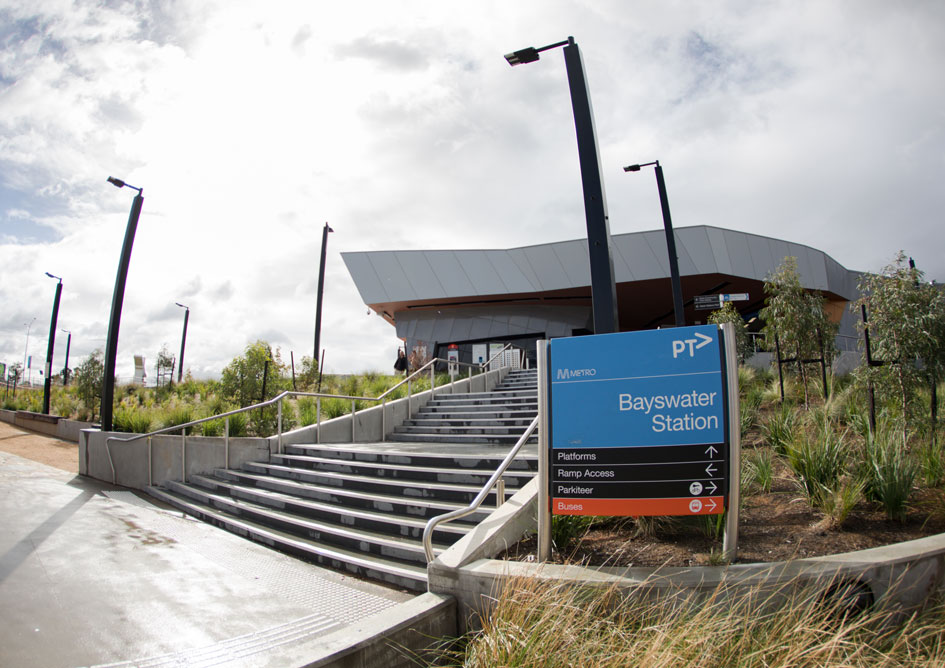
Completed in May 2018, our Bayswater Level Crossing Removal Project has left a positive environmental legacy, reducing carbon emissions by 30% during construction and a projected 43% over the operational life of the new station (based on a 50-year life cycle).
From the beginning of the project, the team adopted environmental performance indicators and developed initiatives to reduce the project’s greenhouse gas emissions.
One initiative involved using construction materials with lower greenhouse gas emissions, such as recycled waste products in concrete mix to create more durable and sustainable concrete infrastructure (this requires less energy in production and produces a lower carbon footprint).
Another initiative was designing the new station in a way that required less materials, for example by raising the alignment of the station platform, less piles were needed and therefore less concrete, which is an energy intensive material.
The new station also saved more than five million litres of water during construction and $1 million in waste disposal, haulage and water costs through the world-first use of a dewatering centrifuge.
The centrifuge separated sediment and water from slurry generated during construction, from drilling and excavation, and turned separated sediment into a dry fill product that was reused as backfill. It also treated slurry water to create clean water, which was reused for ongoing construction and delivery works.
This significantly reduced waste generated on site and allowed construction equipment to remain on site during works, reducing the time required to remove the level crossing and build the new station precinct.
